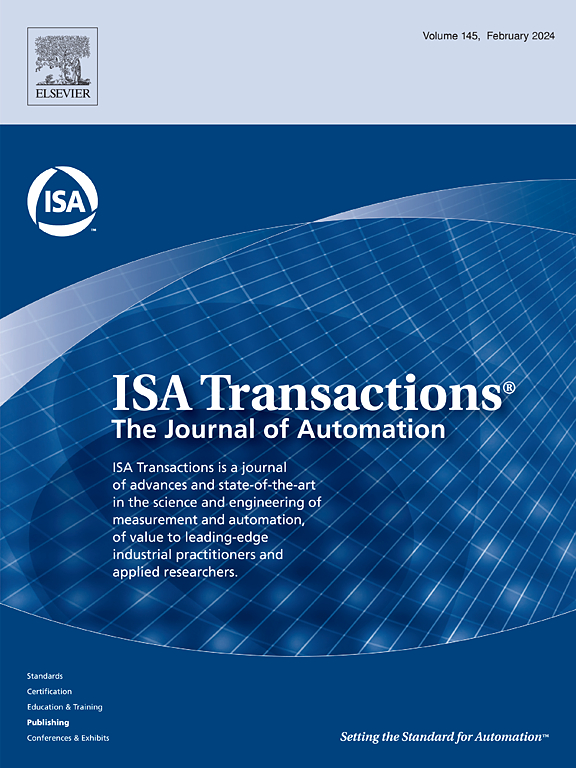Neural network-based adaptive decentralized safe control for interconnected nonlinear systems with time delays
IF 6.5
2区 计算机科学
Q1 AUTOMATION & CONTROL SYSTEMS
引用次数: 0
Abstract
This paper addresses the safety control issue for interconnected nonlinear systems with time delays and asymmetric input constraints by proposing a decentralized dynamic event-triggered (DET) controller based on the adaptive dynamic programming (ADP) method. Unlike other studies on large-scale interconnected systems, the equilibrium point of the system under our study is not zero. Firstly, by incorporating a discount factor and introducing a barrier function and a Lyapunov–Krasovskii (L-K) function, we construct a cost function for the interconnected system with a non-zero equilibrium point, time delay, and constraints, thereby transforming the constrained decentralized control problem into an unconstrained optimal control problem (OCP). Subsequently, an event-based Hamilton–Jacobi–Bellman (HJB) equation is established. To enhance computational efficiency, a DET mechanism is proposed. Then, the event-triggered HJB equation is solved utilizing the learning method based on ADP. Simultaneously, the weights of the neural network (NN) are optimized using a gradient descent algorithm and experience replay (ER) techniques. By employing ER technology, we have eliminated the system’s requirement for continuous excitation. Furthermore, through theoretical analysis, we have demonstrated the uniform ultimate boundedness (UUB) of the system states and neural network weights, and excluded Zeno behavior. Finally, the effectiveness of the proposed method is validated by using a spring-pendulum example.
基于神经网络的时滞非线性互联系统自适应分散安全控制。
本文提出了一种基于自适应动态规划(ADP)方法的分散动态事件触发(DET)控制器,解决了具有时滞和非对称输入约束的互联非线性系统的安全控制问题。与其他大型互联系统的研究不同,我们研究的系统平衡点不为零。首先,通过引入折现因子、障碍函数和Lyapunov-Krasovskii (L-K)函数,构造了具有非零平衡点、时滞和约束的互联系统的代价函数,从而将约束分散控制问题转化为无约束最优控制问题(OCP)。随后,建立了基于事件的Hamilton-Jacobi-Bellman (HJB)方程。为了提高计算效率,提出了一种DET机制。然后,利用基于ADP的学习方法求解事件触发的HJB方程。同时,利用梯度下降算法和经验重放(ER)技术对神经网络的权值进行优化。采用ER技术,消除了系统对连续励磁的要求。此外,通过理论分析,我们证明了系统状态和神经网络权值的一致极限有界性,并排除了芝诺行为。最后,通过一个弹簧摆算例验证了所提方法的有效性。
本文章由计算机程序翻译,如有差异,请以英文原文为准。
求助全文
约1分钟内获得全文
求助全文
来源期刊

ISA transactions
工程技术-工程:综合
CiteScore
11.70
自引率
12.30%
发文量
824
审稿时长
4.4 months
期刊介绍:
ISA Transactions serves as a platform for showcasing advancements in measurement and automation, catering to both industrial practitioners and applied researchers. It covers a wide array of topics within measurement, including sensors, signal processing, data analysis, and fault detection, supported by techniques such as artificial intelligence and communication systems. Automation topics encompass control strategies, modelling, system reliability, and maintenance, alongside optimization and human-machine interaction. The journal targets research and development professionals in control systems, process instrumentation, and automation from academia and industry.
 求助内容:
求助内容: 应助结果提醒方式:
应助结果提醒方式:


